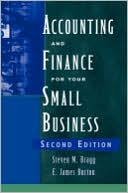Category Books
- Fiction Books & Literature
- Graphic Novels
- Horror
- Mystery & Crime
- Poetry
- Romance Books
- Science Fiction & Fantasy
- Thrillers
- Westerns
- Ages 0-2
- Ages 3-5
- Ages 6-8
- Ages 9-12
- Teens
- Children's Books
- African Americans
- Antiques & Collectibles
- Art, Architecture & Photography
- Bibles & Bible Studies
- Biography
- Business Books
- Christianity
- Computer Books & Technology Books
- Cookbooks, Food & Wine
- Crafts & Hobbies Books
- Education & Teaching
- Engineering
- Entertainment
- Foreign Languages
- Game Books
- Gay & Lesbian
- Health Books, Diet & Fitness Books
- History
- Home & Garden
- Humor Books
- Judaism & Judaica
- Law
- Medical Books
- New Age & Spirituality
- Nonfiction
- Parenting & Family
- Pets
- Philosophy
- Political Books & Current Events Books
- Psychology & Psychotherapy
- Reference
- Religion Books
- Science & Nature
- Self Improvement
- Sex & Relationships
- Social Sciences
- Sports & Adventure
- Study Guides & Test Prep
- Travel
- True Crime
- Weddings
- Women's Studies
Accounting and Finance for Your Small Business » (2nd Edition)

Authors: Steven M. Bragg, E. James Burton
ISBN-13: 9780471771562, ISBN-10: 0471771562
Format: Hardcover
Publisher: Wiley, John & Sons, Incorporated
Date Published: February 2006
Edition: 2nd Edition
Author Biography: Steven M. Bragg
Steven Bragg, CPA, CMA, CIA, CPIM, has been the chief financial officer or controller of four companies, as well as a consulting manager at Ernst & Young and auditor at Deloitte & Touche. He received a Master’s degree in finance from Bentley College, an MBA from Babson College, and a Bachelor’s degree in Economics from the University of Maine. He has been the two-time president of the Colorado Mountain Club, is an avid alpine skier and mountain biker, and is a certified master diver.
Subscribe to Steve’s free best practices newsletter at www.stevebragg.com
E. James Burton, Ph.D., CPA, CFE, is dean of the College of Business and a full professor of accounting at Middle Tennessee State University. He has founded, owned, managed, and sold a number of businesses in a variety of areas from service to manufacturing. He received a Bachelor of Arts degree from MacMurray College in economics/business, a Master of Business Administration degree from Murray State University in management, and a Ph.D. in accountancy from the University of Illinois at Urbana-Champaign. In addition to over 50 journal articles, he has written Total Business Planning: A Step-by-Step Guide with Forms that has continued through three editions and translation into Norwegian. He resides in Murfreesboro, Tennessee.
Book Synopsis
Thorough in its coverage without overwhelming the reader, this book methodically explains each of the financial procedures and techniques vital for establishing and maintaining a profitable small business. Its clear presentation of concepts makes it an effective reference source easily consulted for a particular issue or concern.
Authors Steven Bragg and E. James Burton provide you with tips to maximize your efforts in:
- Budgeting for operations
- Tracking cash flows
- Understanding performance measurement systems
- Investing in long-term assets and capital budgeting
- Conducting analyses
- Analyzing key financial information
- Determining insurance requirements
- And more!
An essential resource, the Second Edition equips you to "read and do" with numerous real-world examples; detailed, step-by-step guidance; and proven strategies and techniques to improve, implement, and benefit from your decisions toward a financially healthy small business.
Table of Contents
Preface.
Section I: Preparing to Operate the Business.
Chapter 1: Budgeting for Operations.
Definition or Purpose of an Operating Budget.
Signs of Budget Ineffectiveness.
Improvements to the Budgeting System.
Responsibility Accounting.
Budget Tracking and Maintenance.
The System of Interlocking Budgets.
Need for Budget Updating.
Summary.
Chapter 2: Investing in Long-Term Assets and Capital Budgeting.
Definitions.
Overview and Use of Capital Budgeting.
Life Cycles.
Capital Budgeting Sequence.
Producing Numbers to Get Dollars, the Use of Forms, and the Capital Budgeting Model.
Miscellaneous Considerations.
Product Discontinuance.
Bailout.
Summary.
Appendix: Examples and Comparison of Calculations.
Chapter 3: Basic Control Systems.
The Need for Control Systems.
Types of Fraud.
Key Controls.
When to Eliminate Controls.
Summary.
Section II: Operating the Business.
Chapter 4: Cash Flow Concerns.
Cash.
What to Do with Excess Cash.
Cash Flows.
Introduction to Cash Flow Budgets.
Indications of Cash Flow Problems.
Managing Cash.
Preparation of the Cash Budget.
Disbursements.
Net Cash Flow and Cash Balances.
Exceptions to Expected Cash Flows.
Summary.
Appendix: Cash Flow Example.
Chapter 5: Financing.
New Businesses.
Zero Working Capital and Zero Fixed Assets.
Types of Financing.
Private Placement of Stock.
Swapping Stock for Expenses.
Stock Warrants.
Stock Subscriptions.
How to Obtain a Bank Loan.
Sources of Debt Financing.
Types of Loan Arrangements.
Restrictions on Loans.
Conditions That a Borrower Should Seek.
Summary.
Section III: Evaluating the Operations of the Business.
Chapter 6: Performance Measurement Systems.
Financial Ratios.
Types of Financial Ratios.
Using Performance Measurements for Predictions.
Operating Ratios.
Other Ratios.
The Balanced Scorecard.
Summary.
Chapter 7: Financial Analysis.
Risk Analysis.
Capacity Utilization.
Breakeven Analysis.
Summary.
Chapter 8: Taxes and Risk Management.
Controlling Tax Liabilities.
Risk Management.
Insurance.
Types of Insurance Companies.
Claims Administration.
Summary.
Chapter 9: Reporting.
Federal Government Requirements.
State Government Requirements.
Local Government Requirements.
Creditors.
Equity Holders.
Management Reports.
Summary.
Index.
Subjects
 Accounting
Accounting  General Accounting
General AccountingBusiness Books
 Management & Leadership
Management & Leadership  Small Business Management
Small Business ManagementBusiness Books
 Professional Finance & Investing
Professional Finance & Investing  Corporate Finance
Corporate FinanceBusiness Books
 Small Business
Small Business  Small Business - General & Miscellaneous
Small Business - General & MiscellaneousBusiness Books
 Small Business
Small Business  Small Business - Legal & Financial
Small Business - Legal & FinancialBusiness Books
 Small Business
Small Business  Small Business Management
Small Business Management
